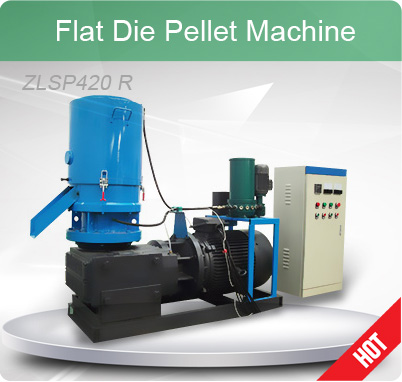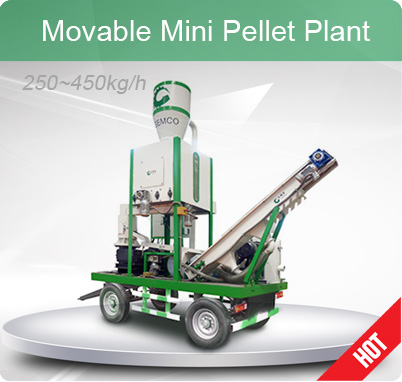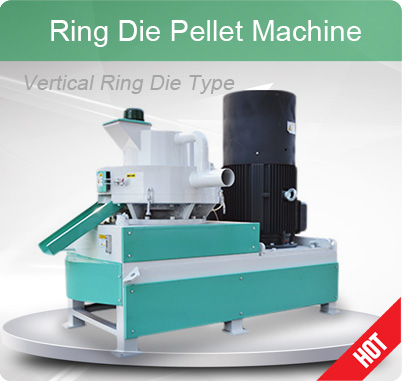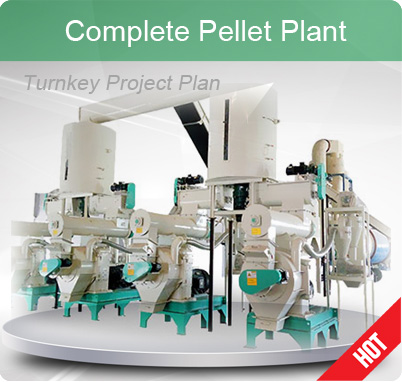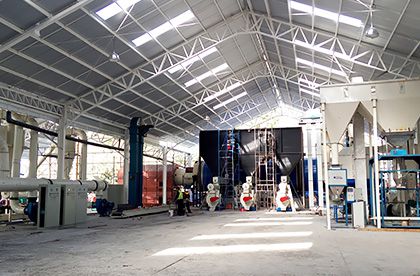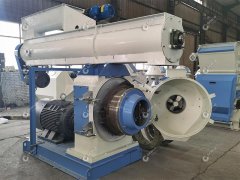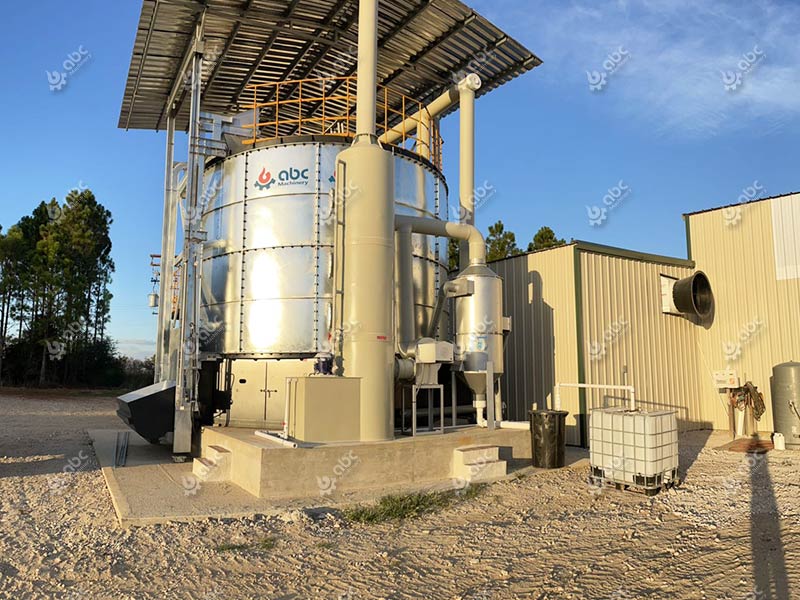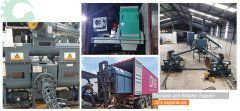Effortless Pellet Production: Softwood Pellet Machine for Easy Fuel Making
Softwood pellets are a type of wood pellets that are made from softwood biomass materials. It is commonly used as a source of heat and energy in residential, commercial, and industrial applications. Softwood refers to wood derived from coniferous trees, which are typically evergreen and have needle-like or scale-like leaves. Several tree species are considered softwood and are suitable for wood pellet making. Some examples include:

Start a Small Softwood Pellet Making Business
- Pine (Pinus spp.): Pine trees are widely used for softwood pellet production. Species like Eastern White Pine, Lodgepole Pine, and Radiata Pine are commonly utilized in complete pellet plant.
- Spruce (Picea spp.): Spruce trees, including species like Sitka Spruce, Black Spruce, and White Spruce, are often used for softwood pellets due to their abundance and favorable wood characteristics.
- Fir (Abies spp.): Fir trees, such as Douglas Fir, Balsam Fir, and Noble Fir, are suitable for wood pellet production. They have desirable properties like high heat output and lower resin content.
- Cedar (Cedrus spp.): Cedar trees, including Western Red Cedar and Eastern Red Cedar, can also be used for softwood pellet making. They offer good energy content and are readily available in certain regions.
- Hemlock (Tsuga spp.): Hemlock trees, like Eastern Hemlock and Western Hemlock, are sometimes utilized for softwood pellet production. They have moderate energy content and can be blended with other softwoods.
These tree species have characteristics that make them suitable for wood pellet production, including their high energy content, lower moisture content, and desirable combustion properties. Softwood pellets made from these tree species provide efficient and consistent heat output. It's important to note that the availability and suitability of tree species for biomass pellet production can vary depending on the geographical region and local forestry practices. Local factors such as sustainability, cost-effectiveness, and environmental considerations should be taken into account when selecting the appropriate softwood species for wood pellet production in a specific area. (You may also like: How is Hardwood Pellets Made?)
Softwood Pellet Machine for Sales
Currently, wood pellet machine that can be used for softwood pellet making has flat die pellet mill and ring die pellet mill. The flat die pellet mill is suitable for small-scale production, characterized by its simple structure, lower price, and ease of operation. On the other hand, the ring die pellet mill is designed for large-scale production, offering high capacity, high pressure, and high pellet density. Depending on production needs and budget considerations, choosing the appropriate wood pellet mill will ensure the production of high-quality softwood pellet fuel. (Read more: Biomass Pellet Machine Manufacturers >>)
Small Softwood Pellet Maker & Large Softwood Pellet Maker
The working principle of flat die pellet mill is: the main motor drives the belt and pulley, which is driven to the main shaft through the reducer, and works in opposite directions through the foliate gears installed on the main shaft and the big gear ring fixed on the body. The material is added from the inlet end and passes through the inside of the barrel. It is made into pellets by the action of the special structure inside the barrel, and flows out through the discharge port. (Read more: Small Pellet Machine Price >>)
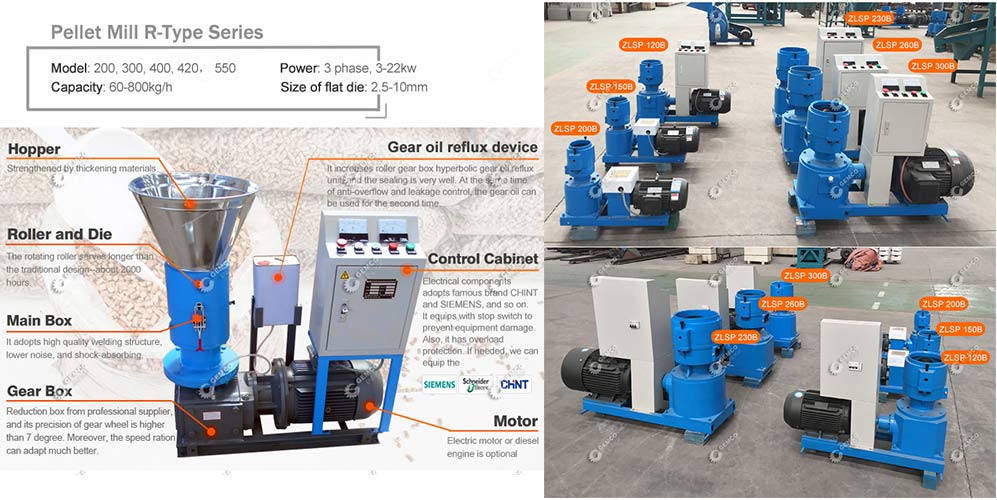
Small Softwood Pellet Maker at Factory Price
When the ring die pellet mill works, the material falls vertically on the upper surface of the frame plate from the large pellet mill inlet, and after the rotation of the frame plate, the material is continuously evenly distributed on the surface of the inner cavity of the die (the contact surface of the press wheel and the die), and the powdered material passes through the holes of the die (the holes evenly distributed on the inner surface of the die) under the crushing of the press wheel. In this process, the material is subjected to high pressure and high temperature, resulting in physical changes or appropriate chemical changes (according to the material), prompting the powdered material to form an ever-lengthening cylindrical solid body, which is continuously elongated until it is cut off by the cutter around the uniform die, forming a certain specification of pellets; the pellets scattered around the die of the wood pellet mill are concentrated by the paddle teeth to the outlet, and the pellets fall automatically under the action of gravity. The pellets scattered around the die of the wood pellet mill are concentrated by the toggle teeth to the outlet, and the pellets fall down automatically under the action of gravity. (Latest model: Vertical Ring Die Pellet Machine >>)

Large Softwood Pellet Machine for Sales
Hardwood Pellets VS Softwood Pellets
There are some differences between hardwoods and softwoods in the biomass pellet production process. (Project report: 2TPH Hardwood & Softwood Pellet Mill Plant Setup in Austrailia >>)

- Raw Material Characteristics: Hardwoods usually come from broad-leaved trees, such as oak, beech, etc., while softwoods come from coniferous trees, such as pine, spruce, etc. Hardwoods are relatively dense and have a high fiber structure, while softwoods are lighter and have a looser fiber structure.
- Shredding: In the process of biomass pellet production, the raw material usually needs to be shredded to cut the wood into suitable pellet size. For hardwoods, due to their higher density, more grinding and shredding is usually required to achieve the desired pellet size. Softwoods, on the other hand, due to their lower density, can usually be more easily cut into the desired particle size.
- Drying Requirements: In the process of making biomass pellets, the raw material usually needs to be dried to reduce the moisture content. Hardwoods usually have a low moisture content due to their denser fiber structure, and therefore require relatively little time and energy for the drying process. In contrast, softwoods have a looser fiber structure and typically have a higher moisture content, so they may take longer and require more energy to dry.
- Pellets Characteristics: Due to the tighter fiber structure of hardwoods, hardwood pellets are usually stronger and denser and have a higher calorific value for combustion. Softwoods have a looser fiber structure, and softwood pellets are relatively lighter and easier to break, with a lower calorific value for combustion.
It is important to note that the process of making biomass pellets also involves other steps, such as grinding, pelletizing, and cooling. These differences are mainly due to the different raw material characteristics of hardwood and softwood, which may affect the handling and energy consumption of the whole biomass pellet making process.

